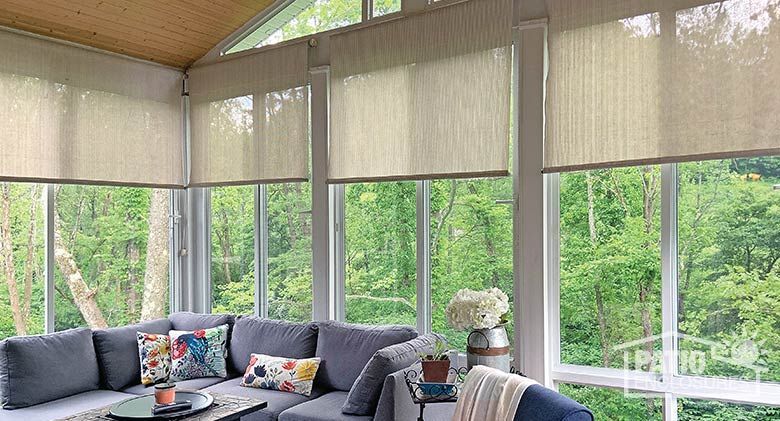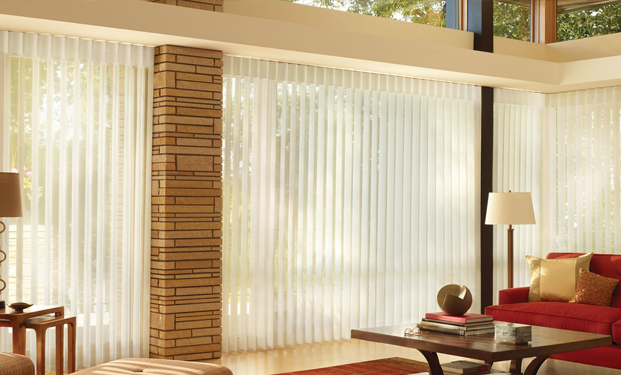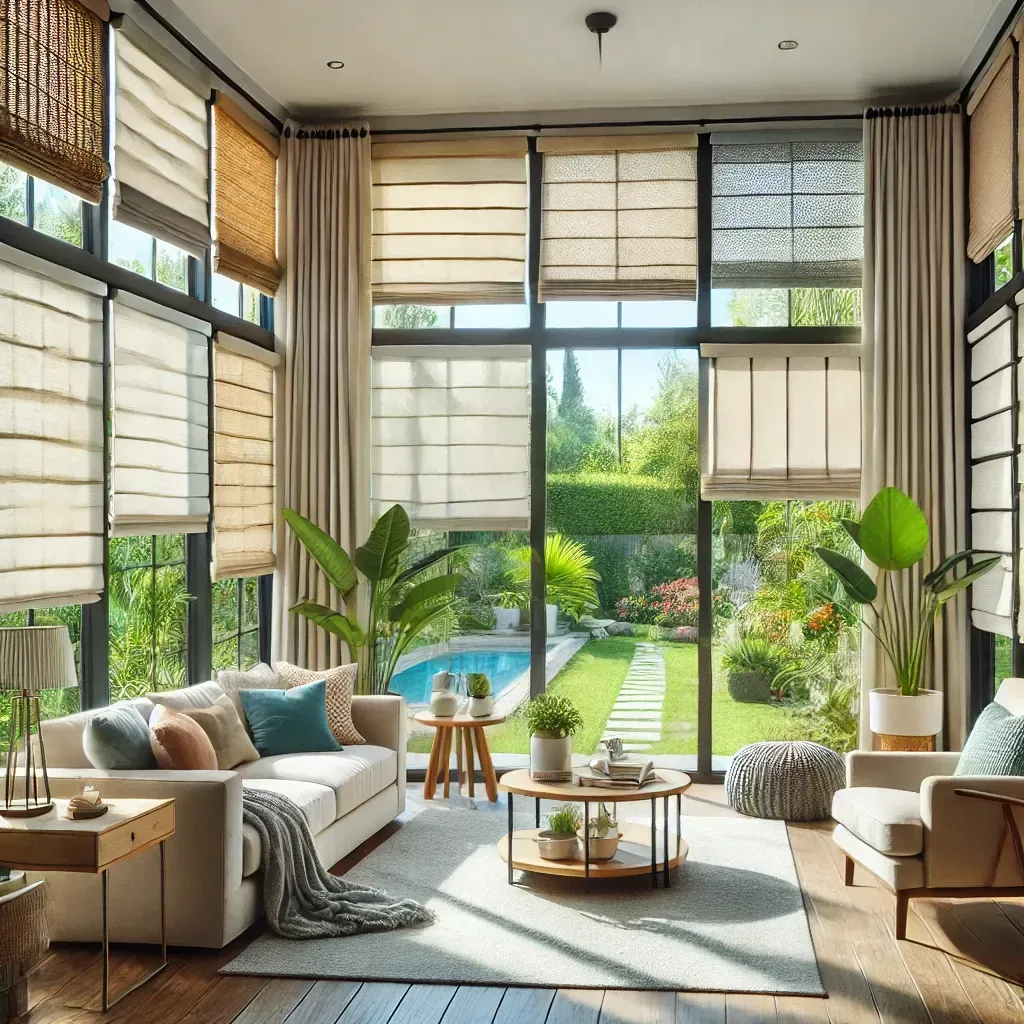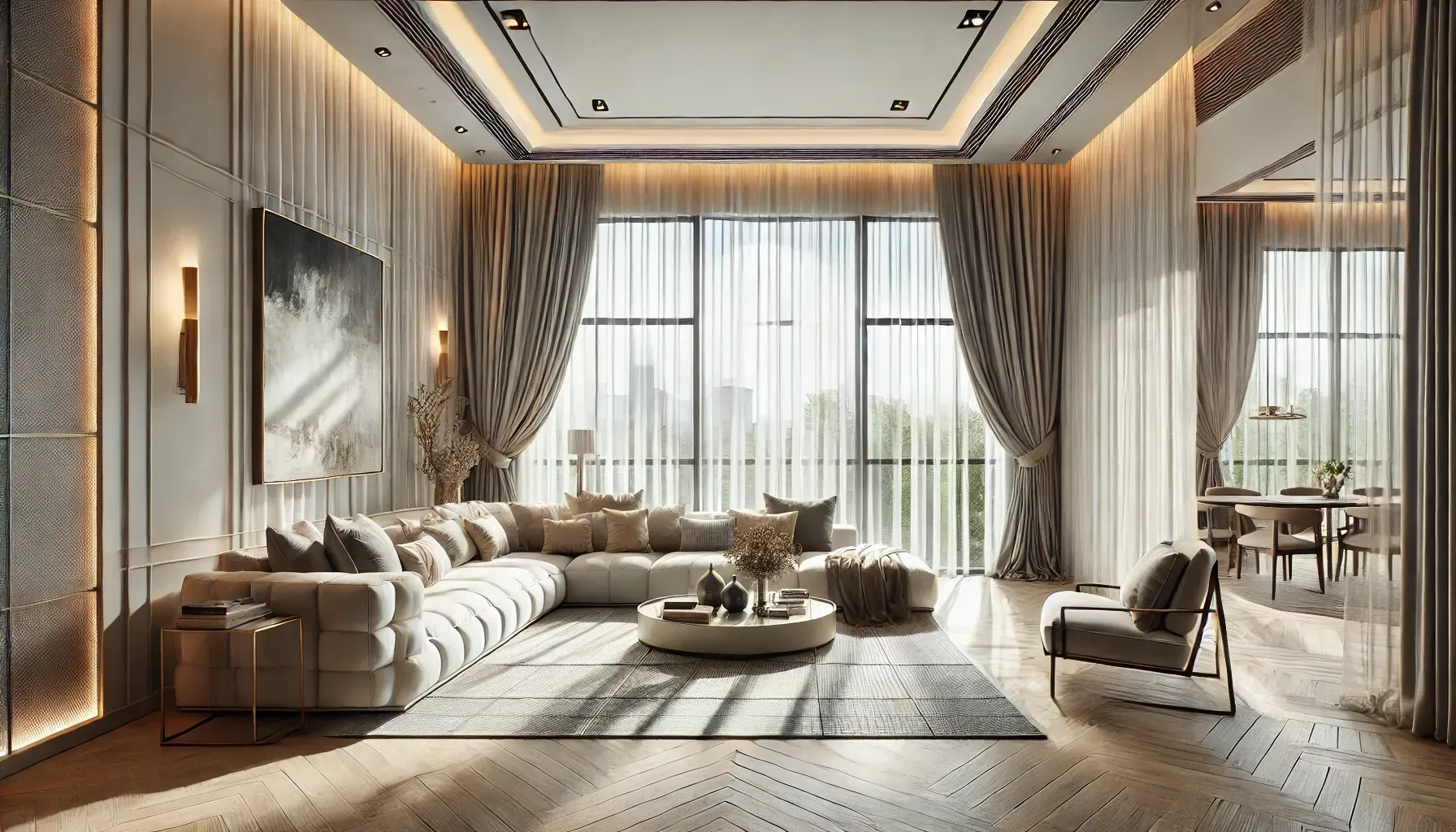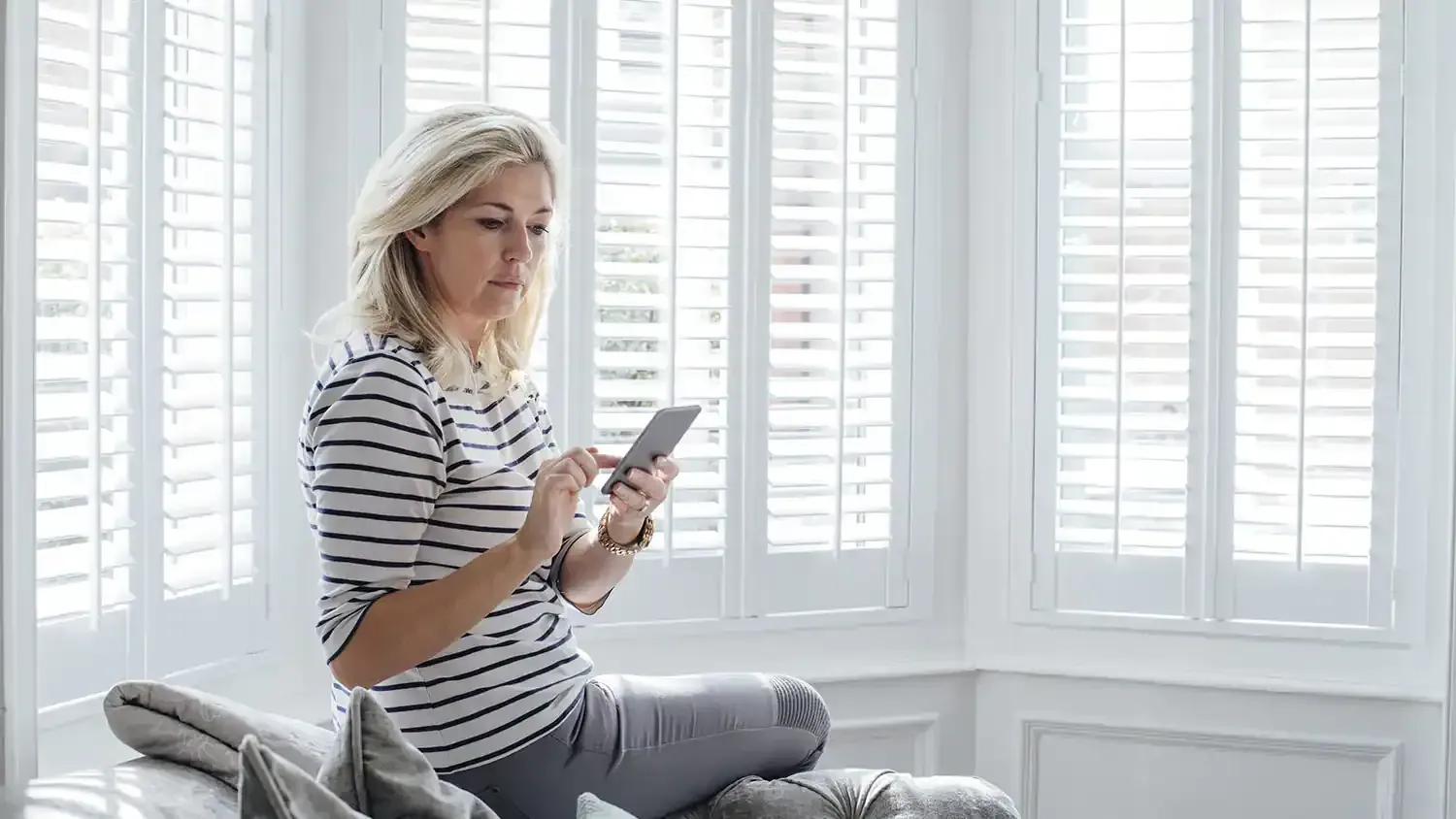How to Choose the Right Window Treatments for Rooms with High Humidity
When selecting window treatments for rooms with high humidity, prioritize materials like faux wood, composite, vinyl, and aluminum—these resist moisture and won’t warp or mold. Avoid natural wood and heavy fabrics, which can absorb moisture and deteriorate over time. By making the right choice, you can ensure long-lasting, stylish, and functional window coverings.
Why High Humidity Demands Special Window Treatments
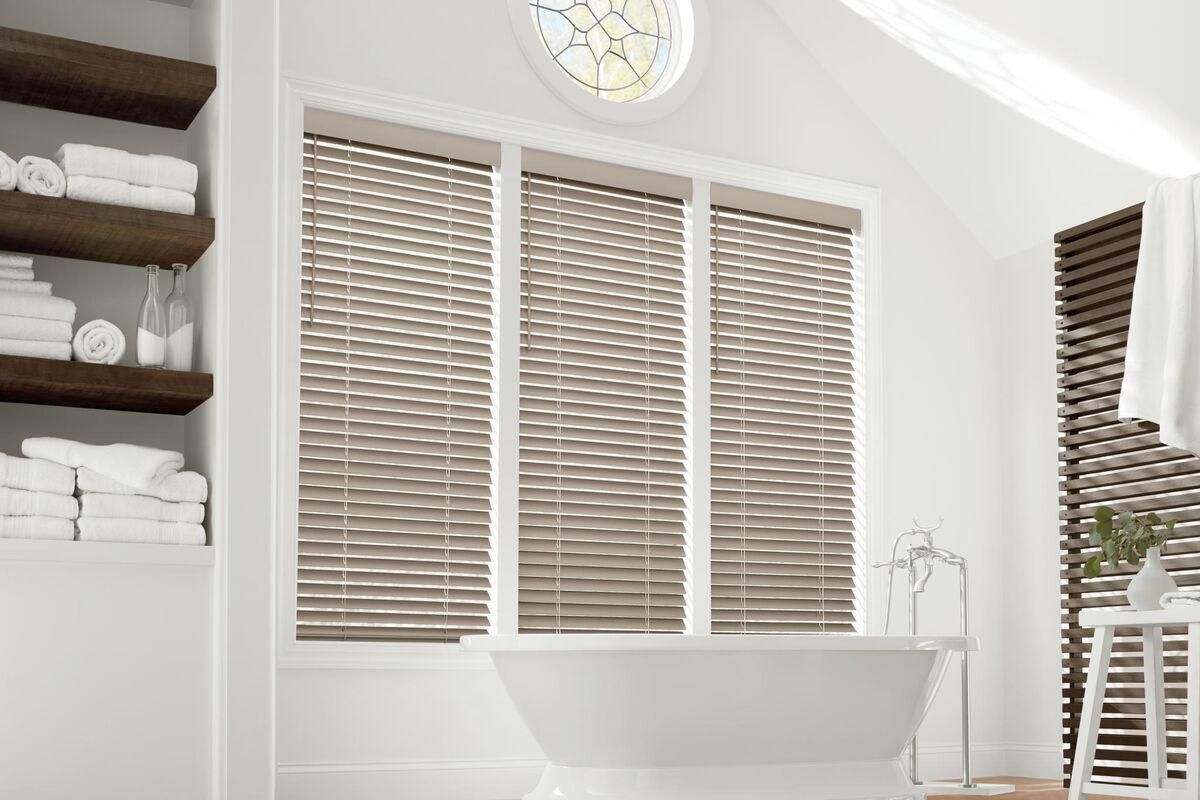
Rooms like bathrooms, kitchens, and laundry areas often face elevated humidity levels, which can wreak havoc on unsuitable window treatments. Moisture can cause natural wood to warp, fabrics to develop mold, and metal components to rust. High humidity demands treatments that not only withstand damp conditions but also remain aesthetically pleasing.
Effects of Humidity on Common Materials
- Wood: Natural wood warps and cracks when exposed to moisture.
- Fabric: Absorbs moisture, leading to mold and mildew.
- Metal: Prone to rust, especially if uncoated.
Common Challenges Homeowners Face
- Mold growth on fabric curtains.
- Peeling or cracking of painted wood shutters.
- Increased maintenance for unsuitable materials.
The Best Window Treatment Options for Humid Environments
Faux Wood Blinds and Shutters

Faux wood is a game-changer for humid spaces. Made from PVC or composite materials, it mimics the look of real wood while resisting moisture damage.
- Why Choose Faux Wood: Durable, waterproof, and easy to clean.
- Best For: Bathrooms and kitchens.
- Design Benefits: Faux wood offers the timeless look of natural wood but performs better under humid conditions, making it a versatile choice for modern and traditional interiors alike.
Vinyl and Aluminum Blinds
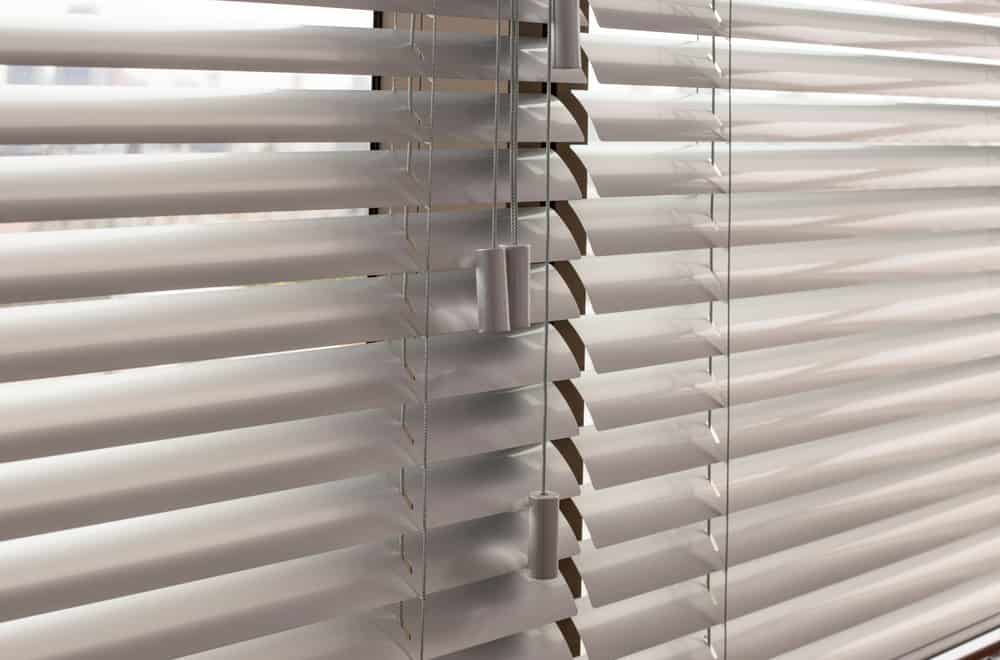
Vinyl and aluminum blinds are budget-friendly and moisture-resistant, making them a practical choice for humid areas.
- Advantages:
- Water-resistant and rust-proof.
- Lightweight and easy to install.
- Considerations: Cords may wear out faster in high-use areas.
- Versatility: Available in various colors and finishes to match different decor styles.
Composite Shutters
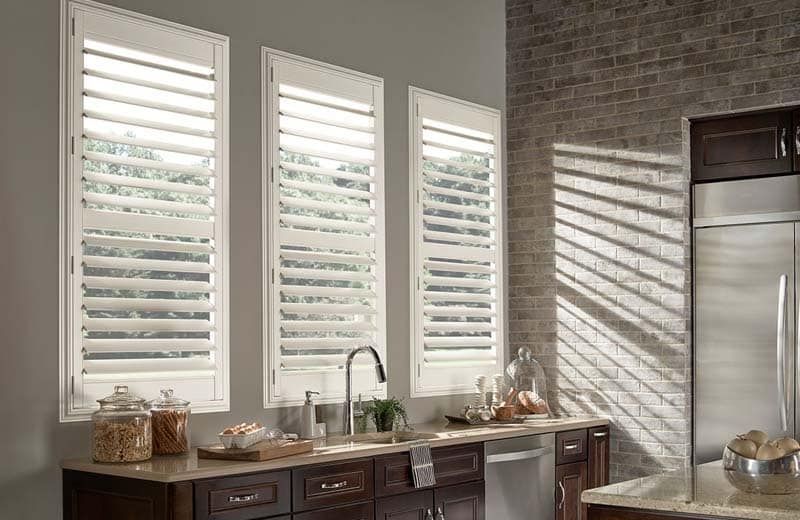
Composite shutters combine the beauty of wood with superior moisture resistance. Their sturdy design makes them ideal for high-humidity rooms.
- Key Benefits:
- Resistant to warping and cracking.
- Low-maintenance and long-lasting.
- Eco-Friendly Options: Many composite shutters are made from recycled materials, appealing to environmentally conscious homeowners.
Solar and Roller Shades

These treatments feature moisture-resistant fabrics and provide excellent light control while minimizing UV damage.
- Highlights:
- Easy to clean.
- Versatile in design and functionality.
- Perfect For: Modern bathrooms, laundry rooms, and sunrooms. Whether you need a durable window covering for a sunroom or a practical option for high-humidity areas, solar shades are a top choice.
Energy Efficiency: Solar shades reduce heat gain, keeping rooms cooler and saving on energy costs. If you're looking for more options that improve insulation and reduce energy consumption, explore our Energy-Efficient Window Treatments guide.
Sheer Curtains
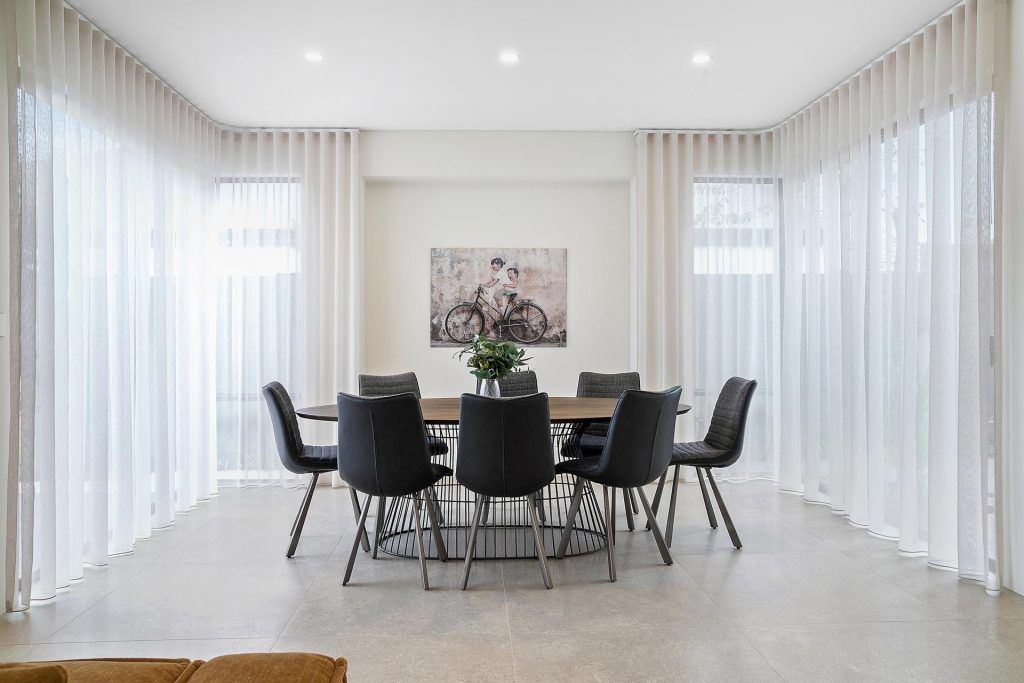
Sheer curtains made from synthetic, quick-drying fabrics can add a touch of elegance without retaining moisture.
- Pro Tips:
- Choose lightweight materials like polyester.
- Wash regularly to prevent mildew buildup.
- Layering Options: Pair sheer curtains with blinds or shutters for added privacy and style.
Materials to Avoid in High-Humidity Rooms
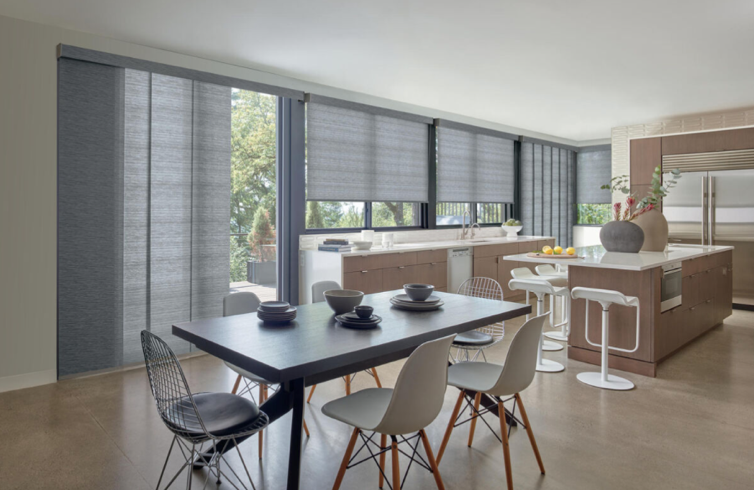
Natural Wood
While beautiful, natural wood is prone to warping, cracking, and decay in damp environments. Consider faux wood alternatives instead.
- Issues: High susceptibility to swelling and rot.
- Maintenance Challenges: Frequent refinishing may be required to keep natural wood looking fresh.
Heavy Fabrics
Thick curtains and drapes trap moisture, becoming breeding grounds for mold and mildew.
- Common Problems:
- Difficult to clean.
- Retain unpleasant odors over time.
- Alternatives: Opt for lightweight or synthetic fabrics.
Cellular Shades
Although energy-efficient, their honeycomb design can trap moisture, leading to mold growth.
- Drawbacks:
- Complicated cleaning process.
- Not ideal for rooms with high humidity.
Additional Tips for Managing Humidity and Prolonging Window Treatment Life

Ensure Proper Ventilation
- Use exhaust fans in bathrooms and kitchens.
- Open windows periodically to improve airflow.
- Additional Tip: Ceiling fans can help circulate air, reducing moisture buildup near windows.
Utilize Dehumidifiers
- Reduce moisture levels with a reliable dehumidifier.
- Aim for a relative humidity level of 30-50%.
- Placement Advice: Position dehumidifiers near windows or damp-prone areas for maximum efficiency.
Maintain a Cleaning Routine
- Wipe down blinds and shutters regularly.
- Wash fabric treatments as recommended by the manufacturer.
- Cleaning Frequency: Increase cleaning during rainy seasons or in regions with consistently high humidity.
Incorporate Moisture-Resistant Decor
- Add water-resistant accessories, like moisture-proof paint around windows.
- Use mold-resistant liners behind curtains for added protection.
- Pro Tip: Consider weatherproof window seals to reduce condensation.
Exploring Future Innovations in Humidity-Resistant Window Treatments

Smart Window Treatments
- Features: Integration with humidity sensors to adjust settings automatically.
- Benefits: Real-time adjustments to prevent moisture damage.
Advanced Materials
- Emerging Options: Nanotechnology-enhanced fabrics that repel moisture and dirt.
- Sustainability: Innovations focus on eco-friendly, durable solutions.
Hybrid Solutions
- Combining traditional aesthetics with modern functionality, such as hybrid blinds that integrate faux wood and solar shade technology for ultimate performance.
Conclusion
Choosing the right window treatments for high-humidity rooms is about balancing durability, functionality, and aesthetics. Options like faux wood shutters, vinyl blinds, and composite shutters offer moisture resistance and long-lasting beauty. By avoiding unsuitable materials and maintaining a proactive cleaning routine, you can enhance your space’s style and functionality.

